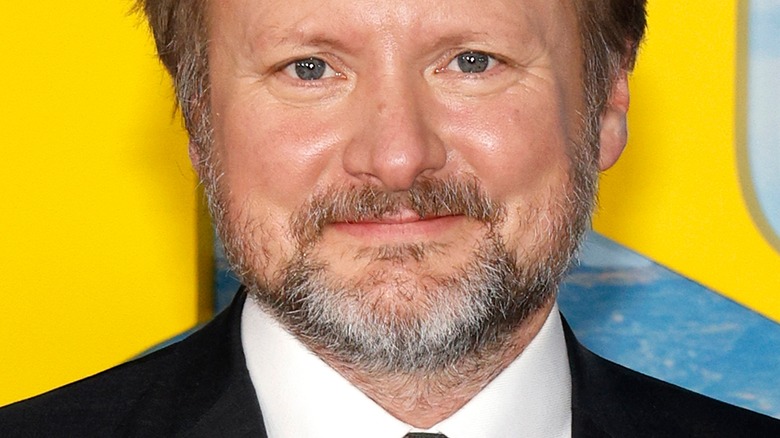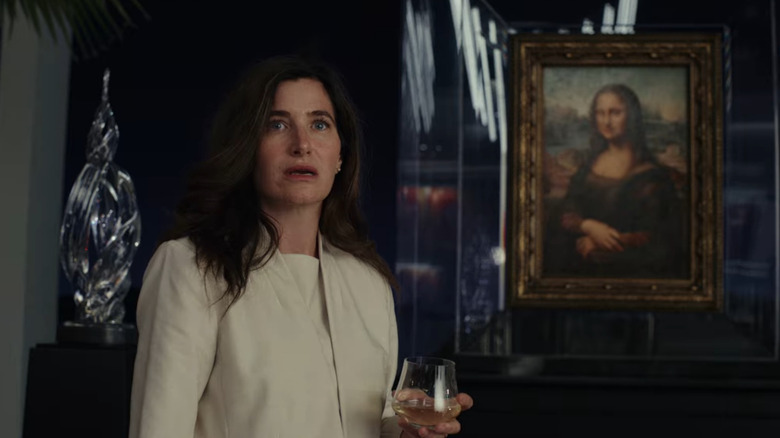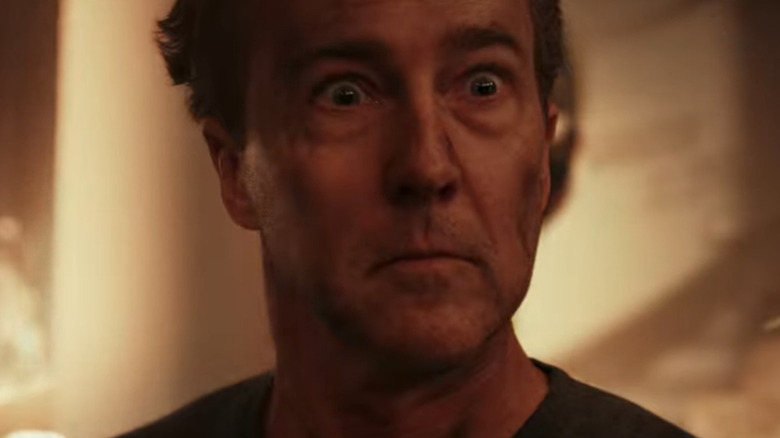Glass Onion's Rian Johnson Explains Why They Had To Destroy The Mona Lisa
Miles Bron (Edward Norton) will be talked about in the same breath as the "Mona Lisa," and so will the ending of "Glass Onion: A Knives Out Mystery" thanks to the incendiary finale, where Leonardo da Vinci's painting goes up in flames. The epic finish is set up early on after Miles boasts to his guests that he had the piece temporarily relocated to his private island. He also reveals it is heavily guarded as it is locked in a protective case, and its safe guard is triggered at the slightest sound. Since it's in the hands of the idiotic and vainglorious Miles, he's built in an override.
It's basically Chekhov's gun as this override was introduced in the first act, so it was fair to assume the painting wouldn't survive to the end of the film, and writer-director Rian Johnson perfectly sets up the "Mona Lisa" to be destroyed by Helen Brand (Janelle Monáe) in the film's final minutes. This being a mystery film, Johnson also had an ulterior motive for destroying the painting that comes as a surprise.
They had to destroy the Mona Lisa by law
Rian Johnson never had the original "Mona Lisa," which remains behind bulletproof glass in the Louvre. Instead, Johnson and his art department had to find a facsimile. For that job, as revealed on The Empire Spoiler Special Podcast (via Collider), they found a local Belgrade artist to make a replica. "It was kind of extraordinary having it on set," Johnson said. While they got the fake "Mona Lisa," this came with an unexpected catch that worked for the film's climax.
"I didn't realize this," Johnson said, "but if you get a recreation like this, you have to destroy [it] when you're done filming if it's a famous work of art ... You actually have to document yourself burning the canvas." The final punch of the "Mona Lisa" burning, which presumably was always part of the film's resolution, therefore has another purpose outside the narrative itself.
Film crews burning their forgeries is not as common as Johnson's statement implies, though. Often, production crews either have to make art that matches the vibe of the original piece without straight-up replicating the work, or they have to use digital technologies (via Vanity Fair). Julian Schnabel's 1996 film "Basquiat," however, was similarly allowed to commission a forgery of Pablo Picasso's "Guernica" on the condition that it was destroyed on film.
The Mona Lisa lives ... in a deleted scene
Rian Johnson said in the interview that Daniel Craig, who plays Benoit Blanc, had reservations. "Daniel was a bit worried that we were 'killing the puppy' by upsetting people as we destroyed the 'Mona Lisa,'" Johnson said, "but the scene in 'Bean' where he destroys 'Whistler's Mother' is one of the funniest scenes in cinematic history, so I figured we'd get away with this. That scene is so good." Johnson also had some reservations of his own about destroying the famous painting; although, it was brief. He even filmed a scene to put viewers at ease that shows the real painting intact, revealing Miles' version to be a forgery.
"We also shot a little coda which we decided not to use, with Blanc on the phone speaking French and getting a little affirmation of 'ah, oui, oui, merci,'" Johnson said, "and cutting to an office in the Louvre where the real 'Mona Lisa' is, with the security guards saying 'well, back to work.'" That scene isn't in the film, however. Johnson explained that it felt like pulling a punch, saying he prefers the version of "Glass Onion: A Knives Out Mystery" that audiences got — the one where the "Mona Lisa" and her famous smile go up in flames.


